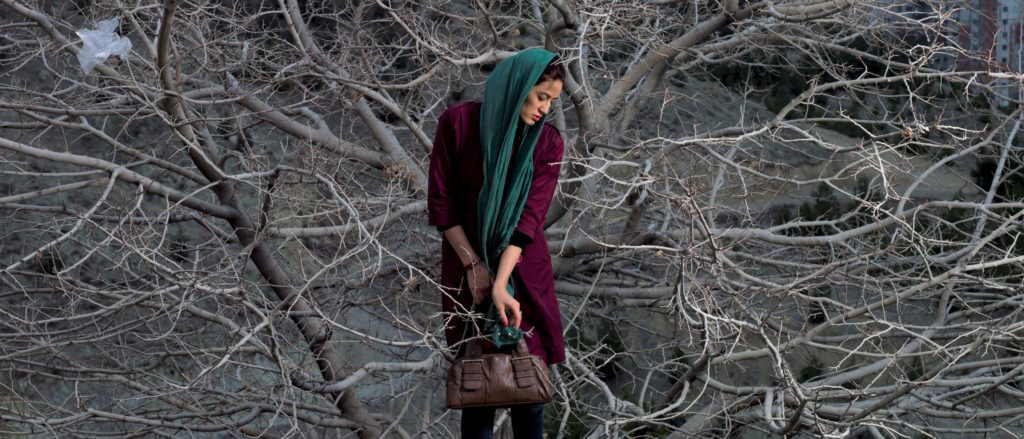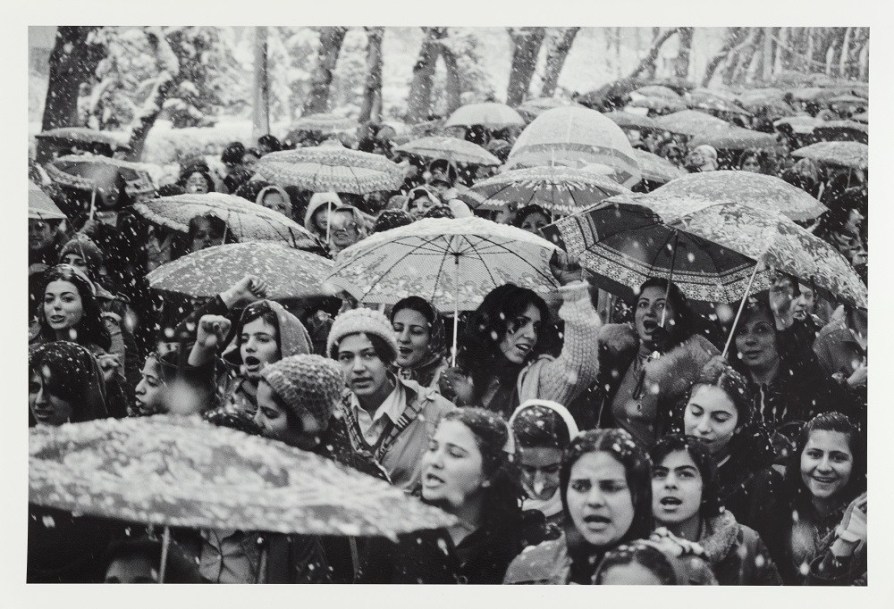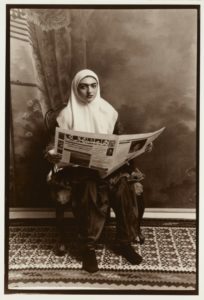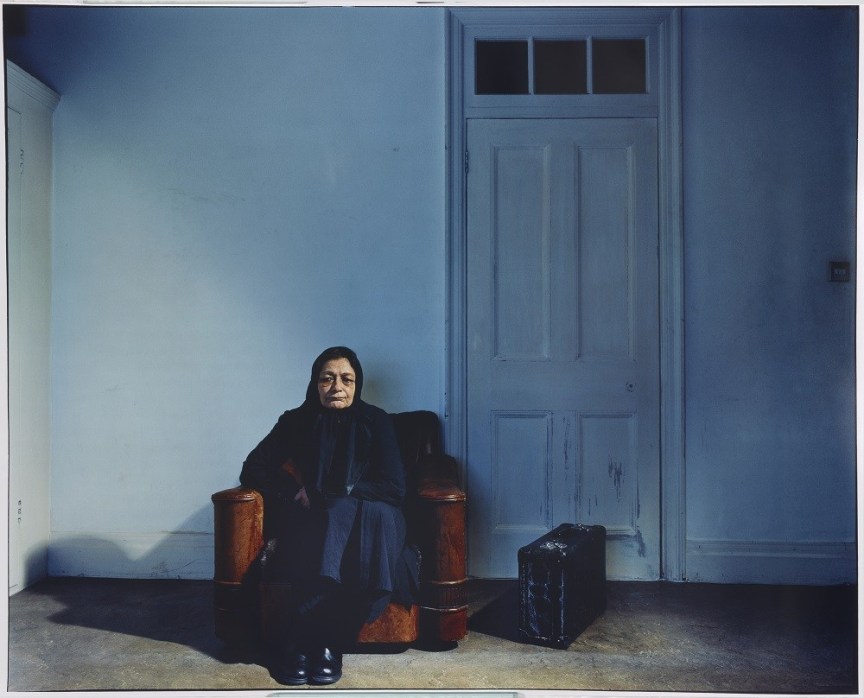Payvendnews – Behind the “veil of daily newspapers,” there are real faces of women—as revealed in the exhibition “My Iran: Six Women Photographers” at the Sackler Gallery. The photographs of their persistence in facing personal and political realities offer a female perspective over 40 years from the beginning of the Iranian Revolution to the present.
In Newsha Tavakolian’s life-sized looped projection, “Somayeh,” a teacher of English at an all girl’s school is posed amid dead tree branches, her blue head scarf blowing in the wind, clear plastic garbage bags around her feet. This is in dramatic contrast to the background of urban Tehran and the distant natural landscape. Resolute in defining her life, she is enveloped by her surroundings, not swallowed up in it.

In the series “Witness,” Hengameh Golestan is one of the few photographers to document the protests in 1979 Islamic Revolution when women were ordered to wear the chador or veil in public. She is part of the crowd, not an outside onlooker as she shares their short-lived optimism in the early months of the revolution.

Purchase—Jahangir and Eleanor Amuzegar Endowment for Contemporary Iranian Art.
Shadafarin Ghadirian poses post-revolution women in historic costume with ordinary objects from contemporary life— a soda can, a newspaper, a bicycle—which accentuate the tension between tradition and modernity that grips post-revolutionary Iran.

In what is both an intimate biography of her parents and a personal memorial, Malekeh Nayiny re-creates her childhood in Iran before she left for France in 1980 with digital alterations of photos of her family for the series “Observation.”Photographs from the 1870s are displayed in a case with her work.
Both Mitra Tabrizian and Gohar Dashti reference common symbols, like the suitcase, which embody memory, identity and inner conflicts. Both create their own definitions of what it means to be Iranian, either within the country or outside of it.
Dashti focuses on those who remain in Iran, caught in physical and emotional limbo. There is a line of people in a field, each with suitcases, but going nowhere or a mother and child with a bloody dead fish from the series “Slow Decay.”
Tabrizian portrays Iranian emigres who left after the revolution. In “A Long Wait” from her series “Borders,” a woman sits posed in a room with a suitcase between her and a door. Is she coming or going? How long has she been there? She is suffering but she is also strong.

Purchase—Jahangir and Eleanor Amuzegar Endowment for Contemporary Iranian Art.
Dashti’s series “Home” presents views of the inside of houses, devoid of humans and overflowing with plants. What at first seems to be a digital creation are actually rooms filled to the brim with vegetation by the artist to assure reality. That natural life thrives even in the most abandoned of places conveys the message of the persistence of life in times of political and social turmoil.
Whether the portraits were re-created digitally in a computer lab, staged in a photo studio or taken in real life on the street, what they share in common as artworks is to present the authenticity of the subjects in the complex history of their time.
“My Iran: Six Women Photographers” is on display at the Sackler Gallery until Feb. 9, 2020. This review originally ran in The Southwester and was republished with author permission.
 Shabtabnews In this dark night, I have lost my way – Arise from a corner, oh you the star of guidance.
Shabtabnews In this dark night, I have lost my way – Arise from a corner, oh you the star of guidance.


